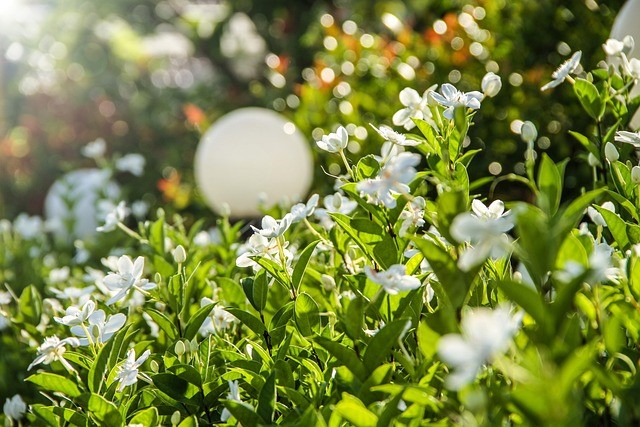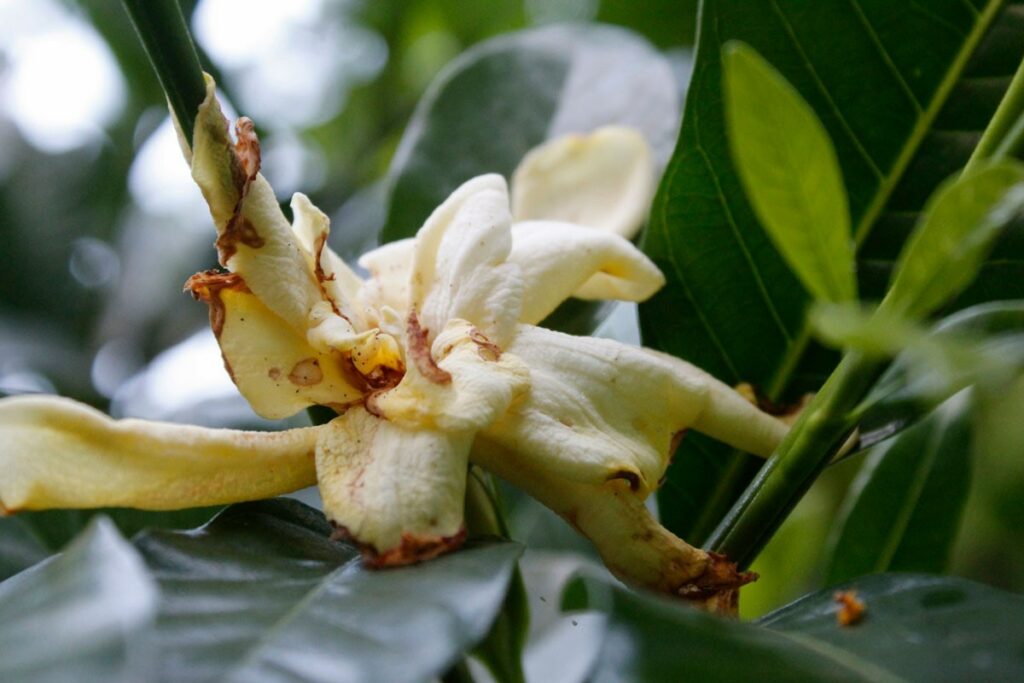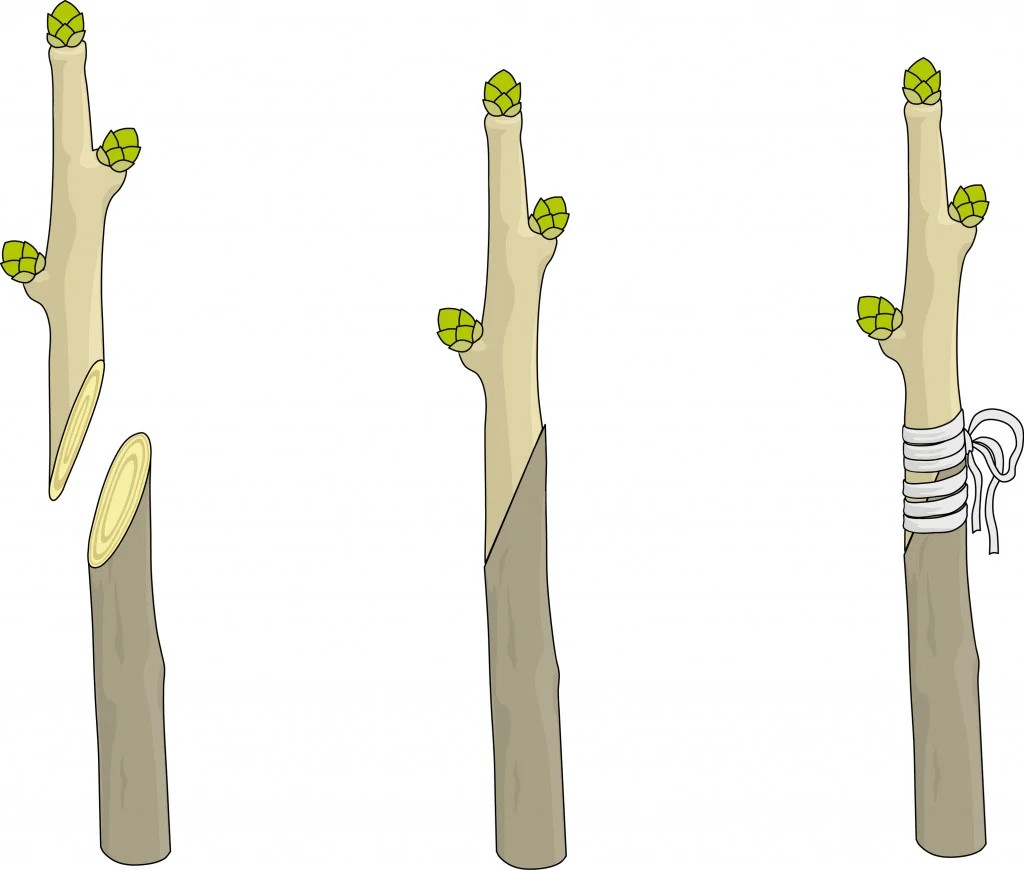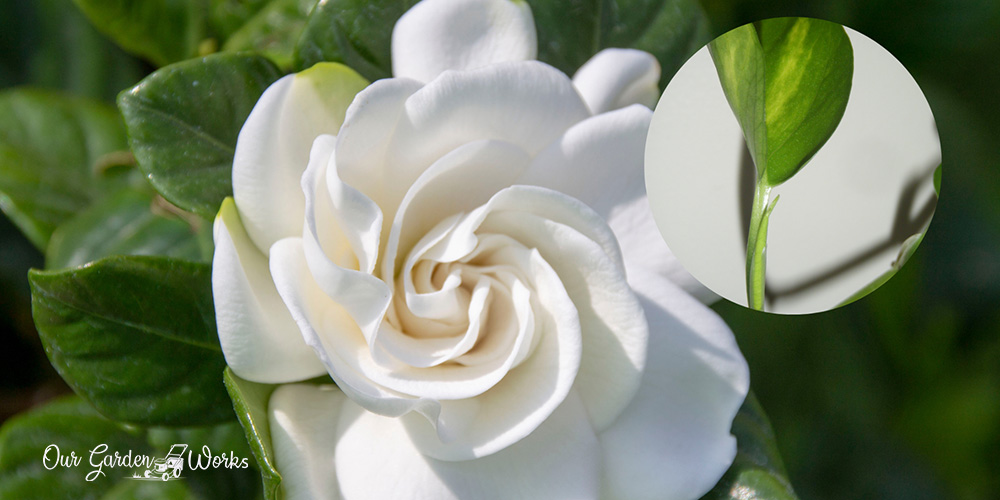Known for its fragrant blooms and sensitive nature, growing gardenia can be a blessing or challenge.
Sadly, gardenia flowers turning yellow is one of its common problems that’s quite hard to figure out. The possible causes usually involve environmental stress, watering issues, or pests.
Gardenia may be a drama queen, especially the non-grafted ones, but their blooms are something that any gardener would love to smell in their garden. Seeing these blooms turn yellow or brown is the plant’s way of sending signals that something is not right with its growing environment.
In this post, we will dissect the possible causes of discoloration of white gardenias and what you can do to keep them from dying.
After all, dealing with plant problems is a great way to know gardenias better, which in turn will help you become a better and wiser gardenia grower.
5 Possible Causes of Gardenia Flowers Turning Yellow
Gardenias are popular in the gardening community as a magnet for a lot of plant problems.
More than yellowing flowers, it is notorious for bud drop and yellowing leaves, which we discussed in this separate post.
Though bloom discoloration rarely occurs in gardenias, it is something that you shouldn’t take lightly, especially if the yellow blooms rapidly turn brown.
White gardenias are the most popular varieties. However, there are also red, pink, and light yellow varieties. In particular, Gardenia jasminoides ‘Golden Magic’ grows white blooms that gradually turn creamy yellow to golden yellow during maturity.
So, before you start investigating some plant problems, it’s best to check first if the variety you have at home is indeed a white gardenia.
If the yellowing blooms are somehow turning brown and the petals look sickly and dry, then the problem must one of the following causes:
#1 Natural Aging
Fragrant gardenia flowers typically last for 1 to 2 months. Their blooms are long-lasting but also expire in their due time. Observe if the maximum bloom duration has been reached before drawing any conclusions about any plant problems.
Gardenia flowers naturally turn yellow to brown at the end of their life. If they’ve been blooming for a month, then it’s safe to consider it as their natural death.
You may extend their ability to bloom with the help of fertilizers and added exposure to dappled light.

#2 Overwatering issues
Gardenias love moist soil. However, some gardeners tend to overdo it by following a routine rather than checking the soil moisture levels before watering.
Sadly, over watering issues often lead to root rot if left untreated. Signs of an overwatered gardenia are:
- Old leaves dropping.
- Yellowing and browning of leaves/flowers.
- Mushy roots.
Gardenias have a shallow soil that can absorb moisture easily and are also susceptible to drowning from excessive watering.
4 factors that usually affects the water drainage in container gardenias are as follows:
(1) Pot size and drainage holes: Gardenias are low-growing shrubs that grow in mid-sized pots with 10-12 inch diameter.
The size of the gardenia plant should correspond to its pot size. Otherwise, the roots will not absorb the excess moisture in the soil, leading to overwatering issues and root rot.
(2) Soil drainage: Gardenias require acidic and well-draining soil. Some gardeners encounter soggy soil because of excessive water-retaining materials like peat or the soil was not amended with organic materials that promote drainage like pine bark, perlite, or compost.
(3) Light exposure: The light exposure of gardenias is also crucial to the evaporation of soil moisture. So, having a good light source not only energizes the gardenia but also protects it from moisture issues.
(4) Air flow and ventilation: Without good air circulation, the soil in indoor gardenias will fail to dry properly.
In most cases, poor ventilation often leads to the formation of fungal diseases. Pathogens thrive in very humid environments and since gardenias grow into a bush, they can easily be taken over by plant diseases.
As part of maintenance, it is best to prune your gardenias regularly to boost growth and improve air circulation.
Directions in watering gardenias are subjective. Label instructions are just an estimation based on optimal growing conditions. However, varying climate conditions will require some certain adjustments to the watering schedule.
Finger check method
The finger check method is the best way to know when to water gardenias. Here’s how:
- Stick your finger a few inches into the soil.
- If there are traces of dirt on your finger, then the soil is pretty moist and can skip some watering. If your finger is clean, then the soil has dried enough and can be watered again.
Another option is to use a moisture meter for a more accurate reading.
#3 Temperature and Heat Stress

Non-grafted gardenias are very fickle to fluctuating temperatures. As soon as the cold touches their leaves or blooms, they will show signs of stress like yellowing flowers or leaves, even bud drop.
Cold temperatures can also lower the humidity level indoors, which will additionally stress gardenias.
The ideal temperature for gardenias is around 65°F to 70°F during daytime and 60°F to 62°F at night. The humidity should also be around 50% to 60%. Making sure that your gardenias stay in these conditions will boost their ability to develop more buds.
Some gardenia varieties are more heat-tolerant. However, in general, most gardenias grow well under dappled sunlight.
To avoid temperature and heat stress from ruining the white blooms of your gardenias, here are some things that you should adjust:
(1) Protect gardenias bought from nurseries in winter or fall during transport. A short exposure to cold when carrying the plants from the nursery to your car can greatly affect them, which often leads to bud drop and overall plant health decline.
Cover your gardenias with anything that would keep them warm as you transport them to your car. It may look extreme but it’s always better to be safe than sorry.
(2) During the cold months, improve indoor humidity by trying any of the following:
- Place a humidifier around your indoor gardenias.
- Other indoor plants boost humidity through the exchange of gas on their leaves. So, placing other indoor plants around your gardenias can improve humidity around its leaves.
- Place a pebble tray around or under the gardenia pot. As soon as the water from the pebble tray evaporates, it creates a humid environment for the leaves and blooms.
- Another practical but effective way of improving humidity around the plant is hanging damp clothes around the room or placing the pot near the sink or in the bathroom.
#4 Lack of enough light
The light exposure of gardenias is directly related to their ability to produce quality blooms and dark green leaves.
Yellowing and browning of gardenia flowers can also mean that the plant is not receiving enough light to sustain its blooms.
To improve the quality of blooms, place your gardenias in bright indirect light for 5 to 6 hours everyday. They prefer the gentle morning sun and will need protection against the harsh afternoon sun.
One ideal location for gardenias in the house is facing the southern window and close to the kitchen sink.
#5 Pest infestations
The last possible cause of yellowing gardenia flowers is stress from pests. Spider mites are fond of gardenias and, even mild infestations, can wreak havoc on these sensitive plants.
Other pests that love feasting on gardenias are the typical sap-sucking insects like:
- Mealybugs.
- Thrips,
- Aphids.
- Caterpillars.
Gardenia flowers turning yellow can be due to the dehydration caused by the heavy infestation of the pests mentioned above. These pests may come from the environment and sometimes come with plants when bought from the nursery.
When buying a gardenia or any other plants from a nursery it’s best to check the underside of the leaves. An easy way to detect the pests easily is through the paper test:
- Place a clean white sheet of paper on a table.
- Shake the leaves of the gardenia over the paper.
- Fold the paper and press it down with your palms.
- Unfold the paper and check any streaks of blooms. If you found some, then the plant has some spider mites in it.
The best solution in dealing with mild to moderate pest infestations is neem oil or insecticidal soap.
Either of the two is effective but neem oil can also serve as a fungicide and miticide. If want to save some money, you may easily splash the bush with water.
The Secret To An Unproblematic Gardenia
The only catch behind gardenia’s enchanting scent is its sensitivity to its growing environment and susceptibility to a lot of pests and diseases.

The good thing is there’s a way to make them less of a problem in the garden – grafting.
Horticulturists and other garden experts graft gardenias with hardy and more tolerant varieties to make them stronger and more tolerant to varying growing conditions.
If you’re about to throw in the towel on growing drama queen gardenias, give them a chance by grafting them to a more tolerant variety.
In case you have no idea how to graft your plants, you may ask the local growers in the area to do it for you.
However, if there’s no commercially available grafted gardenia, you may consult your local garden experts on how to graft your gardenia and the best gardenia variety that you can pair with your poor gardenia.
Tips in growing gardenias and keeping them healthy
Here are some of the tips from several gardenia growers on how they keep their fragrant planets happy and healthy:
(1) Gardenias are slow to wake up during the growing season. So, have enough patience to wait for them to bud and develop blooms around late spring to summer.
(2) With their shallow roots, it’s easy to wound the roots during transplant. So, gently remove the soil and avoid pushing the trowel or any tool in the soil with force. Otherwise, you might cut or damage some of the roots, which can lead to plant stress.
(3) Gardenias are acidic plants with a soil pH requirement of 5.0 to 6.5. Always use a soil pH meter before fertilizing them to ensure that the nutrients will be properly absorbed by the plant.
If the soil is too acidic, you add agricultural lime but if it’s too alkaline you may use sulfur or vinegar or any soil acidifier.
(4) Pruning is crucial to gardenia’s health since it helps boost bloom and leaf development and improve ventilation. It’s best done when the plant is active during the growing season.
(5) Fertilize your gardenias once a month during the growing season. They are not picky with plant food as long as it is intended for acid-loving plants. Professional growers and experts recommend the following fertilizers for gardenias:
(6) If the leaves develop yellow streaks but green veins, then it can be iron chlorosis or iron deficiency. Treat this by applying iron supplement to your gardenia.
Final Thoughts
Gardenia flowers turning yellow is usually not a cause of concern to some gardeners since it is thought to be a natural aging process.
However, sometimes it’s an early sign of an underlying condition. We hope this post helped you understand your gardenia’s behavior and discover new care tips done by other growers.
Which gardenia problems almost made you give up on taking care of them?
Let us know in the comments! Also please share this post with friends and let them cut the chase in finding the solution for their sick and dying gardenias.
